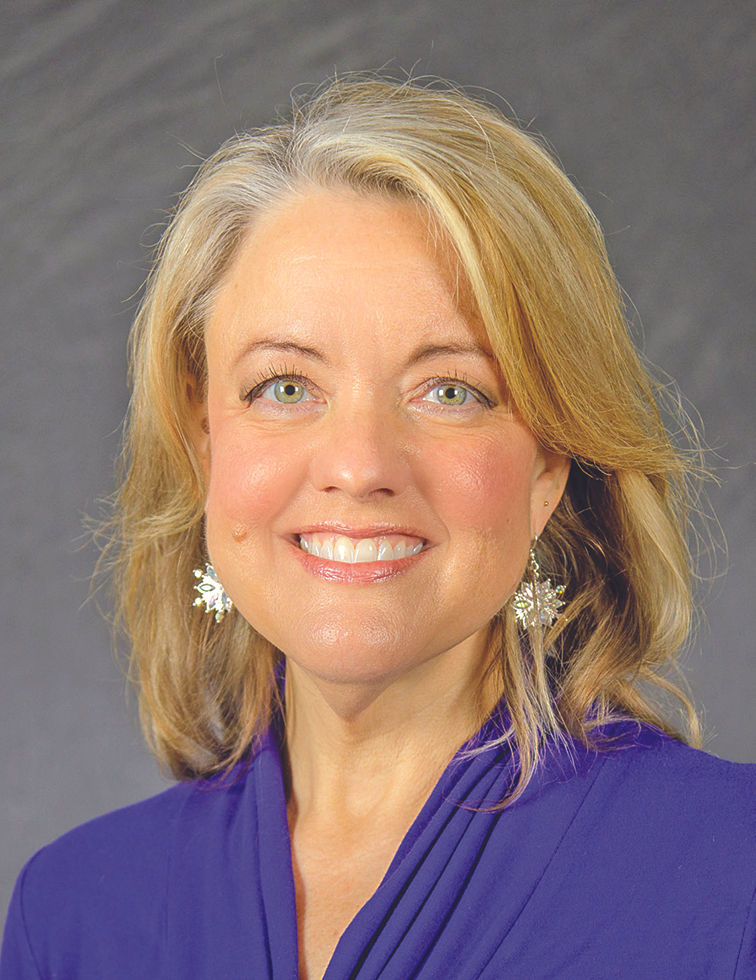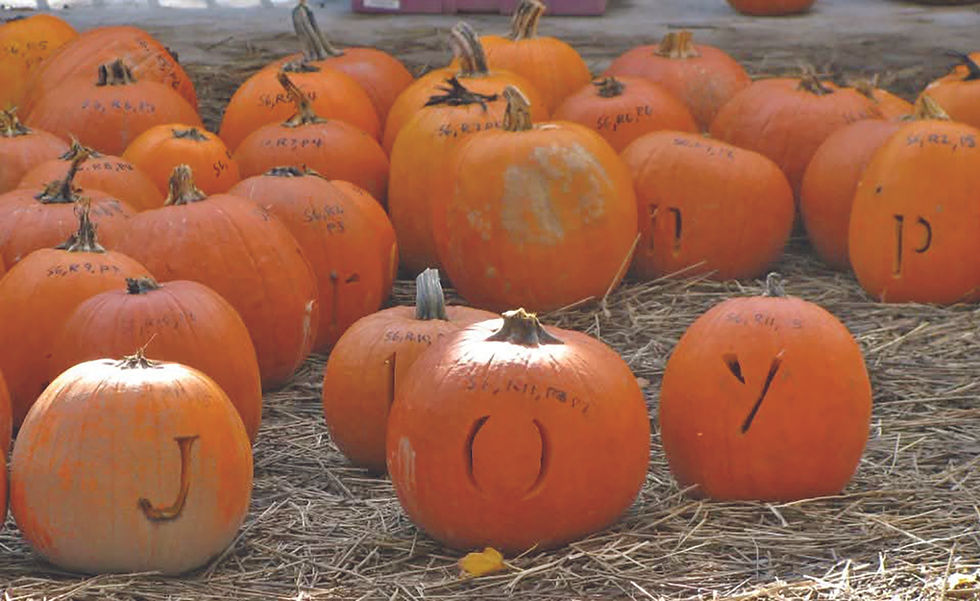Growing Greenup - Cook Wild Kentucky - Deer
- Posted By: Sasha Bush

- 7 minutes ago
- 5 min read
Growing Greenup
Cook Wild Kentucky - Deer
Anne Stephens
For The Ashland Beacon

Deer hunting is a family tradition for many people in my community. Both of my sons learned from my dad and carry on the tradition each season. Over the years, I have learned how to cook venison in many ways because it is a great way to lower grocery costs! Did you know that there are resources at the Greenup County Extension Office that can help you with your grocery costs? One of the many is the Cook Wild series.
This week, I am sharing a portion of a Cook Wild Kentucky publication about white-tailed deer. Please contact me if you are interested in the entire publication complete with recipes!
White-tailed deer are the leading game species in North America. Kentucky offers some of the best hunting opportunities in the country. Deer season starts as early as September and can run through the middle of January, depending on method of take. Visit the Kentucky Department of Fish and Wildlife Resources website at https://fw.ky.gov/Pages/default.aspx for information about licenses, season dates, permits, bag limits, and other tips. Hunters over the age of 12 need a valid hunting license, deer permit, and hunter education certification to hunt deer in Kentucky. Get your hunter education certification card by going to an in-person class, or you can complete an online course, followed by attending a live-fire-experience range day. Information on Hunter Education can be found at fw.ky.gov/ Education/Pages/Hunter-Education.aspx
Field Dressing
All deer hunters need to know the right way to field dress their deer. If not, contamination can happen. Follow these steps:
•Wear rubber gloves, and use a sharp, clean knife.
• Use a head lamp or flashlight if doing it in the dark, or establish a well-lit area for field dressing.
•With care, open the abdominal cavity to remove the organs. Do not cut into the organs, as this could cause bacteria to get on the meat. Take special care not to nick the bladder, intestines, or stomach, which have waste matter.
• Remove all the inside organs first to allow the body cavity to cool down. You can either leave the organs in the field or get rid of them in the trash. Some people keep the heart and liver to eat.
•Move the deer back to your vehicle, using a method that keeps the body cavity clean. Carts, sleds, tarps, ATVs, frame packs, or other methods can make moving the animal easier, depending on the spot where the animal was harvested.
• Keep the animal dry. Do not rinse with water from a stream or lake. Raw water has germs that could be a food safety issue.
• Get the animal to a cool setting as quickly as you can.
• Do not move the deer on the hood of any vehicle. The heat will speed up germ growth and likely spoil the meat.
• Butcher the meat off the bone in a place that is cool and out of sunlight. Germs grow in warm settings. Work quickly to get meat into the refrigerator or freezer. You can find a deer-processing video at https://www.youtube.com/watch?app=desktop&v=PB zsMruHfKI&feature=youtube.
Safe Food Handling
Process your deer in a clean and disinfected space. Be sure to clean and disinfect the area again when you are done. Use a bleach solution made of two tablespoons bleach to one quart of water.
Venison is the name for the meat of larger wild game, such as bison, elk, moose, and deer. Prepping venison is like working with any other meat: it is best to use safe food-handling habits. When storing and handling venison, stop raw meat juice from dripping onto other items in the refrigerator. Do not let raw meat juice spread to other foods on cutting boards. Clean and sanitize all tools that touch raw meat or its juices with warm soapy water. Never thaw frozen deer meat at room temperature. You should thaw meat at a cool temperature in the refrigerator, under cold running water, or in the microwave. Cook raw meat right away after thawing. The color of fresh deer meat is a dark, reddish-brown color. If the meat has a green tint, it has gone bad. The texture should be firm and feel smooth and slick to the touch. If the meat looks loose or has started to break apart, it has begun to spoil. There should not be any odor.
Storage
You can store deer meat in the refrigerator at 40 degrees F or below if it will be eaten within two to three days. Freezing is a great choice for long-term storage. Trim off fat you can see. Use packing methods designed for the freezer. For the best results, wrap the meat tightly in waxed paper, plastic freezer wrap, or heavy-duty aluminum foil. Remove as much air as you can. You can seal wrapped meat in plastic containers or freezer bags for added safety. Home vacuum sealers work well for packing venison for freezing. Don’t forget to label and date each package. Freeze at 0 degrees F or below.
You can also make deer meat into jerky or can it to use a pressure canner. Contact the Extension Office for details about both methods.
Cooking
Eating deer meat is healthy. Venison is one of the leanest red meats. It is high in protein and low in saturated fat. A three-ounce serving of venison has 45% less fat than beef, making it a lower-fat alternative to red meat. Venison is low in sodium and rich in vitamins and minerals. It is a good source of iron, zinc, and vitamin B. You can cut venison to use for steaks, ground burgers, sausage, meatballs, stew meat, or roasts. A great way to use deer meat is in place of red meats or proteins; try venison as a substitute for ground beef in your chili or tacos. Venison meat can become tough when cooked too long. To help make the meat tender, marinate before grilling. Use low, moist heat for a longer cooking time, such as in a slow cooker or roaster. This can help make the meat more tender and flavorful. You should cook whole cuts of meat such as steaks and roasts to an internal temperature of 145 degrees F. Cook ground deer meat to an internal temperature of 160 degrees F. Cook soups, stews, casseroles, and leftovers to 165 degrees F. Use a calibrated metal stem thermometer to check the internal temperature.
The Greenup Extension Office has these recipes available in print:
BBQ Venison Meatballs
Deer Camp Breakfast Sausage
Game-Stuffed Peppers
Roast Venison
Slow Cooker Venison Enchiladas
Slow Cooker Wild Side Burgoo
Venison Cabbage Rolls
Venison Chili
Venison Meatloaf
Venison Sloppy Joes
Venison Steak
Venison Stew
For more information, contact Anne Stephens, Agent for Community Arts and Development in Greenup County. 606.836.0201 anne.stephens@uky.edu 35 Wurtland Avenue, Wurtland, KY 41144 The Martin-Gatton College of Agriculture, Food and Environment is an Equal Opportunity Organization with respect to education and employment and authorization to provide research, education information and other services only to individuals and institutions that function without regard to economic or social status and will not discriminate on the basis of race, color, ethnic origin, national origin, creed, religion, political belief, sex, sexual orientation, gender identity, gender expression, pregnancy, marital status, genetic information, age, veteran status, physical or mental disability or reprisal or retaliation for prior civil rights activity. University of Kentucky, Kentucky State University, U.S. Department of Agriculture, and Kentucky Counties, Cooperating.





Comments